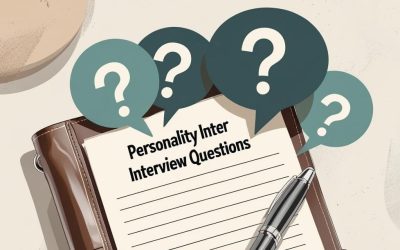Moving on from a job is a significant step in any professional’s journey. Whether you’ve found an exciting new opportunity or are transitioning for personal reasons, submitting a polished resignation letter is essential. This formal document not only communicates your decision but also leaves a positive impression, ensuring a smooth transition and preserving professional relationships. Here’s a step-by-step guide to help you craft an effective resignation letter.
What Is a Resignation Letter?
A resignation letter is a formal document that announces your intent to leave a position, specifies your last working day, and often includes a note of gratitude and an offer to assist with the transition. While it may feel like a mere formality, this letter plays a crucial role in ending your tenure on a professional and respectful note.
Step-by-Step Guide to Writing a Resignation Letter
1. State Your Intent and Last Day
Start with a clear and straightforward declaration of your resignation and specify your final working day. Avoid overexplaining your reasons for leaving; brevity is key. For instance:
Dear [Manager’s Name],
This letter serves as formal notice of my resignation from my role as [Your Position] at [Company Name]. My last working day will be [Your Last Day, typically two weeks from the notice date].
This sets a professional tone and provides essential information upfront.
2. Express Gratitude
Regardless of your experience, it’s professional to thank your employer. Highlight what you appreciated about the role and how it contributed to your growth. For example:
I am deeply grateful for the opportunities I’ve had to [mention specific experiences or skills gained]. Working at [Company Name] has been a rewarding experience, and I value the support and mentorship I’ve received.
This not only shows professionalism but also leaves a positive impression.
3. Offer Assistance
Include a line offering to assist during the transition. While you don’t need to commit to extensive tasks, expressing willingness to help demonstrates your commitment to a smooth handover. For example:
During my notice period, I will do my best to ensure a seamless transition by [mention specific actions, e.g., documenting workflows, training colleagues, or completing key projects]. Please let me know how else I can assist.
4. Conclude with Well Wishes and Contact Information
End your letter on a positive note, wishing the company success and offering to stay in touch. You can include your personal email or LinkedIn profile if appropriate:
I wish [Company Name] continued success in the future. Please feel free to reach out at [your contact details] if needed.
Resignation Letter Template
Here’s a simple, customizable template:
[Your Name]
[Your Address]
[City, State, ZIP Code]
[Date]
[Manager’s Name]
[Company Name]
[Company Address]
[City, State, ZIP Code]
Subject: Resignation Letter
Dear [Manager’s Name],
Please accept this letter as formal notice of my resignation from my role as [Your Position] at [Company Name], effective [Your Last Day].
I am incredibly grateful for the opportunity to work at [Company Name]. Over the past [duration], I’ve gained valuable experience in [mention specific skills or accomplishments]. I deeply appreciate the support and encouragement provided by you and the team.
During the next [notice period], I will ensure a smooth transition by [mention specific actions]. Please don’t hesitate to let me know how else I can assist.
I wish [Company Name] continued growth and success. I look forward to staying in touch—feel free to reach me at [your email or LinkedIn profile].
Sincerely,
[Your Name]
Final Tips for Writing a Resignation Letter
- Keep it Professional: Avoid negative remarks or complaints about the company. Focus on maintaining goodwill.
- Be Concise: Your letter doesn’t need to exceed one page.
- Double-Check the Details: Confirm dates and ensure accuracy in your letter.
- Follow Company Procedures: Submit your resignation letter according to your employer’s policies, typically to your manager and HR department.
By following these steps, you can ensure that your resignation is handled professionally, leaving the door open for future opportunities with your employer or colleagues.
What’s next in your career journey? Whether you’re exploring new roles or leveling up your skills, it’s an exciting time to grow. If you’re aiming for positions requiring English certification, consider the [International English Test (IET)], a globally recognized, flexible, and affordable option to demonstrate your English proficiency. Learn more and prepare for your next chapter with confidence.
I am Nilay, an experienced English Language Assessment Director at the International English Test, where I have been working full-time since February 2020. I specialize in helping people worldwide validate their English proficiency through comprehensive assessments and certifications.
Before joining the International English Test, I worked as a self-employed English Language Assessment Consultant from January 2015 to December 2019. During this time, I assisted companies and individuals in improving their language skills, helping them achieve their academic and professional goals.
I hold a degree in Engineering and have also studied at Shafston International College in Australia. My educational background has equipped me with the tools to make a meaningful impact in the field of English language learning. Additionally, I enjoy sharing my expertise through articles that explore effective teaching methods and language assessment strategies, contributing to the International English Test and the broader assessment community.




